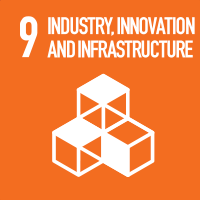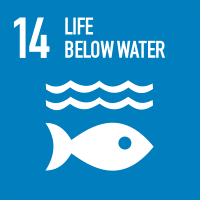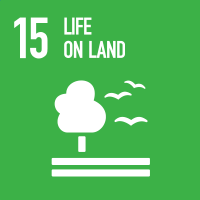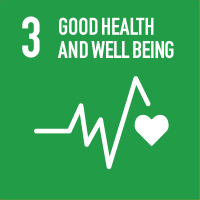Studying at the University of Verona
Here you can find information on the organisational aspects of the Programme, lecture timetables, learning activities and useful contact details for your time at the University, from enrolment to graduation.
Type D and Type F activities
This information is intended exclusively for students already enrolled in this course.If you are a new student interested in enrolling, you can find information about the course of study on the course page:
Laurea in Biotecnologie - Enrollment from 2025/2026The educational activities of type D are the student's choice, those of type F are additional knowledge useful for entering the world of work (internships, transversal skills, project works, etc.). According to the Didactic Regulations of the Course, some activities can be chosen and entered independently in the booklet, others must be approved by a special committee to verify their consistency with the study plan. Type D or F training activities can be covered by the following activities.
1. Teachings delivered at the University of Verona.
Include the teachings listed below and/or in the Catalog of Teachingshttps://www.univr.it/it/catalogo-insegnamenti - Opens in a new window (which can also be filtered by language of delivery via Advanced Search).
Booklet entry mode: if the teaching is included among those listed below, the student can enter it independently during the period- Opens in a new window in which the syllabus is open; otherwise, the student must make a request to the Secretariat, sending to carriere.scienze@ateneo.univr.i- Opens in a new windowt the form- Opens in a new window in the period indicated- Opens in a new window.
2. CLA language certificate or equivalency.
In addition to those required by the curriculum, the following are recognized for those matriculated from A.Y. 2021/2022:
- English language: 3 CFUs are recognized for each level of proficiency above that required by the course of study (if not already recognized in the previous course of study).
- Other languages and Italian for foreigners: 3 cfu are recognized for each proficiency level starting from A2 (if not already recognized in the previous study cycle).
These cfu will be recognized, up to a maximum of 6 cfu in total, of type F if the teaching plan allows it, or of type D. Additional elective credits for language knowledge may be recognized only if consistent with the student's educational project and if adequately motivated.
Those matriculated up to A.Y. 2020/2021 should consult the information found here- services - cla - language exercises - science and engineering https://www.scienzeingegneria.univr.it/?ent=iniziativa&id=4688 - Opens in a new window.
Booklet entry mode: apply for the certificate- Opens in a new window orequivalency- services - recognition of external language certifications - cla Opens in a new window to the CLA and send it to the Student Secretariat - Careers for the inclusion of the exam in the career, by email: carriere.scienze@ateneo.univr.it- Opens in a new window
3. Soft skills
Discover the training paths promoted by the University's TALC - Teaching and learning centerhttps://talc.univr.it/ - Opens in a new window, intended for students regularly enrolled in the academic year of course delivery https://talc.univr.it/it/competenze-trasversali- Opens in a new window
Booklet entry mode: The teaching is not intended to be included in the syllabus. Only upon obtaining theOpen Badgehttps://talc.univr.it/it/servizi/open-badge - Opens in a new window will the booklet CFUs be automatically validated. The registration of CFUs in career is not instantaneous, but there will be some technical time to wait.
4. Contamination lab
The Contamination Lab Verona (CLab Verona) is an experiential pathway with modules dedicated to innovation and business culture that offers the opportunity to work in teams with students from all courses of study to solve challenges launched by companies and institutions. The pathway allows students to receive 6 CFUs in the D or F area. Discover the challenges: https://www.univr.it/clabverona- Opens in a new window
PLEASE NOTE: To be eligible to take any teaching activity, including electives, you must be enrolled in the year of the course in which it is offered. Therefore, it is recommended that undergraduates of the December and April sessions DO NOT take extracurricular activities of the new academic year, in which they are not enrolled, since these degree sessions are valid with reference to the previous academic year. Therefore, for activities carried out in an academic year in which they are not enrolled, no recognition of CFUs can be given.
5. Internship/internship period
In addition to the CFUs stipulated in the curriculum (check carefully what is indicated on the Educational Regulations) here- services - internships and apprenticeships - science and engineering It opens in a new window you can find information on how to activate the internship.
Check in the regulations which activities can be Type D and which can be Type F.
Please also note that for internships activated from October 1, 2024, it will be possible to recognize excess hours in terms of Type D credits, limited only to internship experiences carried out at host institutions outside the University.
| years | Modules | TAF | Teacher |
|---|---|---|---|
| 3° | Python programming language [English edition] | D |
Carlo Combi
(Coordinator)
|
| years | Modules | TAF | Teacher |
|---|---|---|---|
| 3° | LaTeX Language | D |
Enrico Gregorio
(Coordinator)
|
| 3° | Python programming language [Edizione in italiano] | D |
Carlo Combi
(Coordinator)
|
| years | Modules | TAF | Teacher |
|---|---|---|---|
| 1° | Subject requirements: basic mathematics and physics | D |
Elisa Artegiani
(Coordinator)
|
General Microbiology (2024/2025)
Teaching code
4S008408
Credits
9
Language
Italian
Also offered in courses:
- General and food microbiology with laboratory of the course Bachelors' degree in Nutraceutical sciences and food health
Scientific Disciplinary Sector (SSD)
BIO/19 - MICROBIOLOGY
Courses Single
Authorized with reserve
The teaching is organized as follows:
General Microbiology
laboratorio [1° turno]
laboratorio [2° turno]
Learning objectives
Module: THEORETICAL LECTURES The course is designed to introduce students to the basic knowledge of the microbial world as well as to illustrate the main methodological tools for research in microbiology, with a detailed comparison of the properties among the different type of microorganisms, both prokaryotes and eukaryotes, including bacteria, archaea, yeasts, filamentous fungi, and - in a distinct section, since non-cellular organisms – the viruses. During the first series of lectures, general themes will be addressed such as morphological and functional diversity, genetic, biochemical and metabolic features, evolutionary aspects and ecology of microorganisms, including how they interact with specific environmental factors. In the second series of lectures, microorganisms will be discussed as reference systems for fundamental studies dealing with molecular biology as well as biochemistry and metabolic regulatory mechanisms. Also elements will be provided about the methods for microbe cultivation and on strategies for the control of microbial growth and the conditioning of the metabolism. The third part of lectures will cover the detailed study of particularly important microbial groups to be defined with the Students. Module: LABORATORY PRACTICES This laboratory module is designed to guide students in the acquisition of techniques and in the development of manipulative skills all necessary for the identification and the study of both structural and functional characteristics of the microorganisms of interest, as well as for a proper handling of microbial cultures within research activities. The main objective of the module is to provide students with the basic tools, represented by traditional analytical procedures in microbiology, but also with the knowledge of advanced techniques, based on molecular methods of investigation, useful for basic research but even the definition of the correct approach to issues related to the many themes of applied microbiology.
Prerequisites and basic notions
All the basic courses of the 1st year.
Pre-requisites: General and cellular biology
Knowledge of biochemistry
Basic bioinformatics skills
Program
------------------------
UL: teoria
------------------------
1. MICROBIAL EVOLUTION AND DIVERSITY: Origin and Evolution of the Microbial Life; Bacteria; Archaea; Eukaryotic Cell and Eukaryotic Microorganisms; Microbial Taxonomy and Systematics.
2. PRINCIPLES OF MICROBIOLOGY: Cell Structure and Function in Bacteria, Archaea and Fungi (Yeast and Moulds);
3. MICROBIAL GROWTH: Microbial Nutrition, Culture and Growth Aspects; Antimicrobial Agents and Microbial Growth Control.
4. METABOLIC DIVERSITY: Phototrophy and autotrophy , Aerobic (EMP pathway, Enther-Doudoroff pathway, Hexose Monophosphate Shunt + electron transport chain and proton motive force generation) and Anaerobic Respiration Fermentations (homolactic and heterolactic, mixed-acid, butane-diol, propionic, butanol/acetone fermentations), Chemolithotrophy; Other biosyntheses (ammonia assimilation, nitrogen fixation).
5. VIRAL DIVERSITY: Overview of Different Viral Groups; Bacteriophages.
6. HINTS on BACTERIAL GENETICS: Genetic Recombination: Transformation, Conjugation, Transduction, and MOLECULAR BIOLOGY AND GENE EXPRESSION Regulation of Gene Expression.
7. MICROBIAL INTERACTIONS. Type of relationships between microorganisms (commensalism, parasitism, mutualism). The microbial consortia. Symbiotic associations: interactions between species. The mycorrhizae.
8. MICROBIAL BIODIVERSITY AND INVESTIGATION METHODS: The cultivable and non-cultivable microbial biodiversity. Identification, classification, and nomenclature of cultivable biodiversity. The nomenclature: rules and tools (Code of the nomenclature and LPSN - List of Prokaryotic Names with Standing in Nomenclature). The concept of species, the definition of strain and type strain. The classical systematic approaches (phenetic, numerical, polyphasic), the phylogenetic approach. The investigation techniques, from the hybridization of total DNA to the sequencing and comparison of genomes and levels of taxonomic resolution. Non-cultivable biodiversity: culture-independent study techniques (PCR-DGGE, metabarcoding, metagenomics) and their nomenclature (Candidatus).
9. GROUPS OF MICROORGANISMS: The taxonomic levels and the main groups of microorganisms Proteobacteria, Firmicutes, Actinobacteria, Deinococcus-Thermus.
------------------------
UL: laboratorio
------------------------
The aim of the laboratory is to demonstrate to the student some techniques of microbiological analysis of a natural source, through the use of analytical methods based on morphological, physiological and biochemical tests to evaluate the types of microorganisms present which in the source itself and to classify them by a taxonomical approach. In the first teaching credit, it will be displayed some techniques of plate count using general-purpose media to count and isolate bacteria and fungi, microbial growth patterns in tube and plate, motility assay and culture maintaining methods. In the second teaching credit, it will be displayed some methods used to carry out a preliminary identification of bacteria and fungi. Optical microscopy for morphological analysis of cells, sugar patterns assimilation and fermentation, cell staining methods and enzymatic assays.
Molecular methods: (a) Total DNA extraction from liquid culture: i) DNA detection by means of agarose gel electrophoresis, ii) DNA quantification on BioPhotometer through analysis of 260/280 and 260/320 ratios – (b) PCR amplification of the 16S rRNA gene sequence – (c) BOX-PCR analysis and observation of BOX profiles by agarose gel electrophoresis – (d) Analysis of 16S rRNA gene sequences of sonme unknown isolates by comparison with genetic sequence data banks: i) NCBI; ii) Ez-Taxon.- e) construction of phylogenetic trees by using 16S rRNA sequences of strains belonging to Bacillus sp. and Pseudomonas sp.
------------------------
UL: laboratorio
------------------------
The aim of the laboratory is to demonstrate to the student some techniques of microbiological analysis of a natural source, through the use of analytical methods based on morphological, physiological and biochemical tests to evaluate the types of microorganisms present which in the source itself and to classify them by a taxonomical approach. In the first teaching credit, it will be displayed some techniques of plate count using general-purpose media to count and isolate bacteria and fungi, microbial growth patterns in tube and plate, motility assay and culture maintaining methods. In the second teaching credit, it will be displayed some methods used to carry out a preliminary identification of bacteria and fungi. Optical microscopy for morphological analysis of cells, sugar patterns assimilation and fermentation, cell staining methods and enzymatic assays.
Molecular methods: (a) Total DNA extraction from liquid culture: i) DNA detection by means of agarose gel electrophoresis, ii) DNA quantification on BioPhotometer through analysis of 260/280 and 260/320 ratios – (b) PCR amplification of the 16S rRNA gene sequence – (c) BOX-PCR analysis and observation of BOX profiles by agarose gel electrophoresis – (d) Analysis of 16S rRNA gene sequences of sonme unknown isolates by comparison with genetic sequence data banks: i) NCBI; ii) Ez-Taxon.- e) construction of phylogenetic trees by using 16S rRNA sequences of strains belonging to Bacillus sp. and Pseudomonas sp.
Bibliography
Didactic methods
------------------------
UL: teoria
------------------------
Frontal lessons. In case of limitations due to COVID, supporting video material (recordings) will be provided.
------------------------
UL: laboratorio
------------------------
The laboratory will consist of group exercises, as well as lectures aimed at preparing practical activities and analyzing and discussing the results obtained.
------------------------
UL: laboratorio
------------------------
The laboratory will consist of group exercises, as well as lectures aimed at preparing practical activities and analyzing and discussing the results obtained.
Learning assessment procedures
------------------------
UL: teoria
------------------------
There are no ongoing tests. The exam will consist of an oral assessment of the degree of learning achieved on the course program. The exam consists of three or four questions posed to each candidate. The exam has a total duration of approximately 30 minutes.
------------------------
UL: laboratorio
------------------------
At the end of the practice lessons the student must be draw up a report on the results obtained in laboratory and related comments. The manuscript must be given to laboratory teachers within 15 days from the end of the practical experiences. Based on the report evaluation, a score of maximum 2 points will be attributed and it will be added to the final exam score.
------------------------
UL: laboratorio
------------------------
At the end of the practice lessons the student should be draw up a report on the activity carried out in laboratory. The manuscript will be considered during the test.
Evaluation criteria
------------------------
UL: teoria
------------------------
------------------------
UL: laboratorio
------------------------
------------------------
UL: laboratorio
------------------------
Criteria for the composition of the final grade
The final evaluation is expressed out of thirty. The report on the laboratory exercises will be associated with a maximum score of 2 points which contribute to the composition of the final grade and any honors.
Exam language
Italiano UL: teoria Italiano ------------------------ UL: laboratorio ------------------------ ------------------------ UL: laboratorio ------------------------




